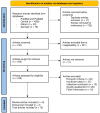Programmed Cell Death Protein 1 (PD-1) and Programmed Cell Death Ligand 1 (PD-L1) Immunotherapy: A Promising Breakthrough in Cancer Therapeutics
- PMID: 37667784
- PMCID: PMC10475160
- DOI: 10.7759/cureus.44582
Programmed Cell Death Protein 1 (PD-1) and Programmed Cell Death Ligand 1 (PD-L1) Immunotherapy: A Promising Breakthrough in Cancer Therapeutics
Abstract
The advent of immune checkpoint inhibitors has revolutionized cancer therapy by leveraging the body's immune system to combat malignancies effectively. Among these groundbreaking agents, programmed cell death protein 1 (PD-1) and programmed cell death ligand 1 (PD-L1) inhibitors have emerged as pivotal therapeutic approaches. PD-L1, a key protein expressed on the surface of various cells, including cancer cells, plays a central role in immune regulation by interacting with the programmed cell death protein 1 (PD-1) receptor on T-cells leading to immune suppression. The substantial increase in PD-L1 expression on cancer cell surfaces has driven the exploration of PD-1/PD-L1 inhibitors as potential immunotherapeutic agents. These inhibitors are monoclonal antibodies designed to impede the PD-L1 and PD-1 interaction and disrupt the immunosuppressive signal, thereby reinvigorating the anti-tumor immune response mediated by activated T-cells. Clinical trials investigating PD-1/PD-L1 inhibitors have demonstrated remarkable efficacy in the treatment of diverse advanced or metastatic cancers, including leukemia, non-small cell lung (NSCLC), hepatocellular, melanoma, gastric, colorectal, and breast cancers, among others. Regulatory approvals have been granted for both monotherapy and combination therapy with other cancer treatments, encompassing chemotherapy and additional immune checkpoint inhibitors. While PD-1/PD-L1 inhibitors have exhibited significant success, they are not devoid of challenges. The emergence of intrinsic or acquired resistance, as well as immune-related adverse events, warrants thorough investigation and management. Consequently, researchers have embarked on combination trials to augment the therapeutic potential of PD-1/PD-L1 inhibitors and surmount resistance mechanisms.
Keywords: cancer therapeutics; clinical trials; immune check-point inhibitor; immunotherapy; pathology.
Copyright © 2023, Abaza et al.
Conflict of interest statement
The authors have declared that no competing interests exist.
Figures
References
Publication types
LinkOut - more resources
Full Text Sources
Other Literature Sources
Research Materials

